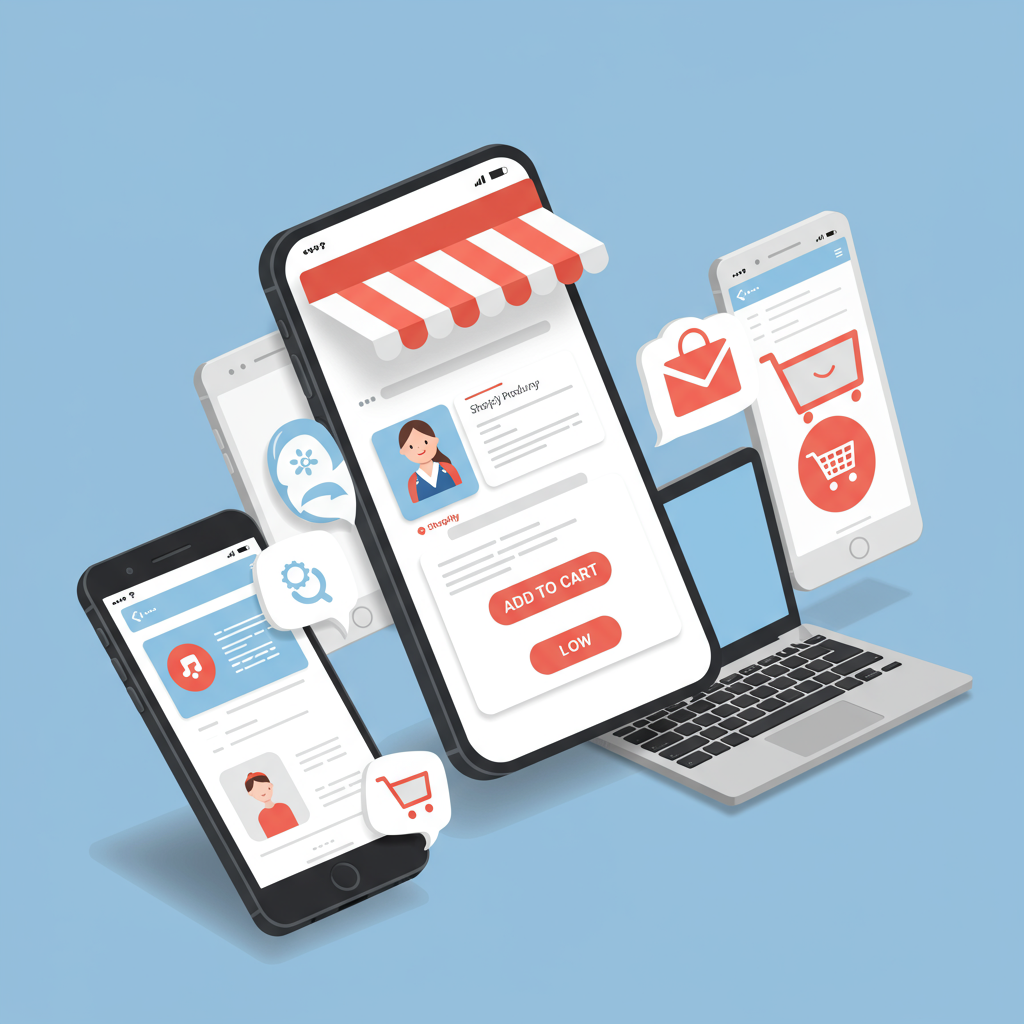Unlock More Sales by Designing for the Small Screen First
Hello fellow Shopify merchants! Today, I want to talk about something incredibly crucial for your online store’s success: designing for mobile first.
In my experience, many of us still think about desktop design as the primary focus, then adapt for mobile. But the truth is, that approach is outdated.
The vast majority of online traffic, especially in e-commerce, now comes from mobile devices. Your customers are browsing, discovering, and buying on their phones.
If your Shopify store isn’t optimized for these users from the ground up, you’re not just losing sales; you’re creating a frustrating experience.
A mobile-first approach means we design for the smallest screen first, then progressively enhance the experience for larger screens.
This forces us to prioritize content, focus on essential elements, and ensure lightning-fast loading times – all things mobile users demand.
So, how do we actually implement this on Shopify? Let’s dive into some practical steps and principles I’ve found incredibly effective.
First and foremost, your Shopify theme is your foundation. When selecting a theme, always look for one that explicitly states it’s “mobile-responsive” or “mobile-first.”
Most modern Shopify themes are responsive by default, but there’s a difference between being responsive and being *optimized* for mobile-first.
A truly mobile-first theme will present a clean, uncluttered layout on small screens, with easy-to-tap buttons and clear calls to action.
Next, let’s talk about speed. Mobile users are notoriously impatient. Every second counts. I always emphasize image optimization.
Large, unoptimized images are the biggest culprits for slow loading times. Use tools to compress your images without sacrificing quality before uploading them to Shopify.
Shopify does some optimization automatically, but pre-optimizing them yourself gives you more control and better results. Consider using WebP format where possible.
Navigation is another critical area. On mobile, screen real estate is limited. A cluttered menu is a nightmare.
I recommend simplifying your main menu to only the most essential categories. Use a hamburger menu icon, but ensure it’s clearly visible and intuitive.
Think about how a user will tap through your store. Is the path to purchase clear and concise? Can they find what they need in just a few taps?
Product pages are where the magic happens. For mobile, your product images need to be high-quality but also optimized for quick loading.
Ensure your product descriptions are concise and scannable. Use bullet points and short paragraphs. Mobile users don’t want to scroll through walls of text.
The “Add to Cart” button must be prominent, easy to tap, and ideally “sticky” as the user scrolls down the product page.
What about the checkout process? This is where many mobile users abandon their carts. Simplify, simplify, simplify!
Minimize the number of fields required. Offer autofill options. Ensure your payment gateways are mobile-friendly and load quickly.
Consider offering express checkout options like Shop Pay, Apple Pay, or Google Pay. These significantly reduce friction for mobile users.
I also find it incredibly helpful to regularly test my store on various mobile devices – not just emulators, but actual phones and tablets.
Use Google’s Mobile-Friendly Test and PageSpeed Insights to get objective data on your store’s performance and identify areas for improvement.
Don’t forget about pop-ups and notifications. While useful, they can be incredibly disruptive on mobile if not implemented carefully.
Ensure any pop-ups are easy to close and don’t cover essential content. Consider using exit-intent pop-ups that are less intrusive.
Accessibility is also paramount. Ensure your text is readable, buttons are large enough to tap without error, and contrast ratios are good.
Think about thumb zones – where a user’s thumb naturally rests on the screen. Place important interactive elements within these zones.
Finally, remember that mobile-first design isn’t a one-time task; it’s an ongoing process. Monitor your analytics for mobile user behavior.
See where users are dropping off, what pages they spend time on, and adjust your design accordingly. Continuous improvement is key.
By embracing a mobile-first mindset, you’re not just making your store look good on phones; you’re creating a more efficient, user-friendly, and ultimately, more profitable online business.
It’s about respecting your customers’ time and device preferences. It’s about building a seamless shopping journey from the palm of their hand.
I truly believe that prioritizing mobile will set your Shopify store apart in today’s competitive e-commerce landscape.
What are your thoughts on mobile-first design for Shopify? Have you implemented any of these strategies, and what results have you seen? I’d love to hear your perspective.






